Gray Garden Slug
- March 29, 2024
- 0 comment
The Gray Garden Slug, scientifically referred to as Deroceras reticulatum, is a familiar sight in gardens and green spaces worldwide. This slimy creature, measuring between 1 to 2 inches in length, boasts a mottled grayish-brown coloration and lacks the protective shell seen in other mollusk species. Its smooth, slimy texture aids in traversing various surfaces while safeguarding against dehydration. Highly adaptable, these slugs thrive in diverse environments, from gardens and agricultural fields to urban landscapes, favoring moist, humid conditions for activity. As hermaphrodites, they lay clusters of translucent eggs in soil or hidden nooks during warmer months, contributing to their prolific population growth.

Feeding voraciously on plant matter like leaves, stems, and fruits, they pose a significant challenge to gardeners and farmers, often leading to diminished crop yields. Despite their pest status, gray garden slugs play integral roles in ecosystems, aiding in nutrient cycling and serving as prey for various predators. Their nocturnal habits, distinct slime trails, and fascinating reproductive capabilities make them both a nuisance and a subject of intrigue in the natural world.
| Specification | Details |
|---|---|
| Scientific Name | Deroceras reticulatum |
| Common Name | Gray Garden Slug |
| Size | 1 to 2 inches in length |
| Coloration | Mottled grayish-brown |
| Texture | Smooth and slimy |
| Habitat | Gardens, agricultural fields, urban areas |
| Activity | Nocturnal |
| Reproduction | Hermaphroditic; lay translucent eggs |
| Diet | Feeds on plant matter (leaves, stems) |
| Predators | Birds, toads, frogs, snakes, beetles |
| Importance | Pest in gardens; aids in nutrient cycling |
| Unique Feature | Produces thick slime trail when moving |
Gray Garden Slug
The gray garden slug, scientifically known as Deroceras reticulatum, is a prevalent mollusk species belonging to the class Gastropoda. Despite being considered a pest by gardeners and farmers, these slugs hold significant ecological importance.
Physical Characteristics
Coloration
The Gray Garden Slug exhibits a mottled grayish-brown coloration, which serves as effective camouflage in its natural habitats. This coloration helps it blend seamlessly with the soil, vegetation, and other substrates commonly found in gardens and agricultural fields. While primarily gray, individual slugs may vary slightly in color, with some displaying darker or lighter shades depending on environmental factors and genetic variation.
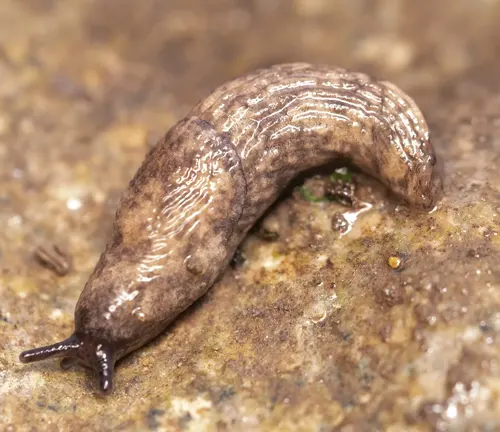
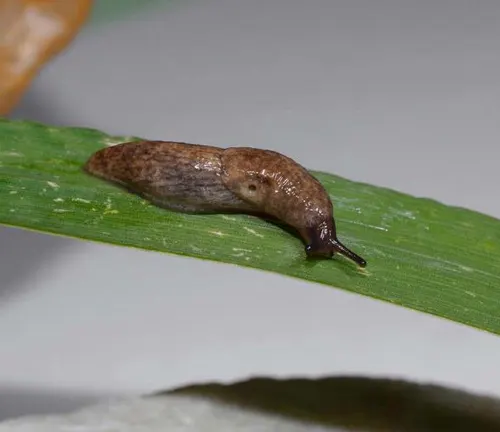
Size
Gray Garden Slugs typically range in size from 1 to 2 inches in length, although individual specimens may occasionally exceed these dimensions. Their elongated bodies are cylindrical in shape, tapering towards the rear, and are relatively slim compared to some other slug species. Despite their seemingly small size, gray garden slugs can have a significant impact on garden plants due to their voracious feeding habits and rapid reproduction rates.
Body Structure
The body of the Gray Garden Slug is characterized by its lack of a protective shell, distinguishing it from many other mollusk species. Instead, it features a soft, muscular body covered in a thin layer of mucus, which aids in locomotion and moisture retention. Along the dorsal surface of the slug’s body, subtle ridges or grooves may be visible, contributing to its overall texture and appearance. The head of the slug is equipped with sensory organs, including tentacles, which help it navigate its surroundings and locate food sources.

Habitat and Distribution
Preferred Environments
Gray Garden Slugs thrive in environments characterized by moisture and vegetation. They prefer habitats such as gardens, agricultural fields, forests, and urban green spaces where they can find ample food and shelter.

Geographical Distribution
These slugs have a widespread distribution and can be found in temperate regions around the world. They are commonly encountered in North America, Europe, Asia, and parts of Australia.
Life Cycle
Reproduction
Gray Garden Slugs are hermaphroditic, meaning they possess both male and female reproductive organs. They engage in mating behavior by exchanging sperm with other individuals during elaborate courtship rituals.
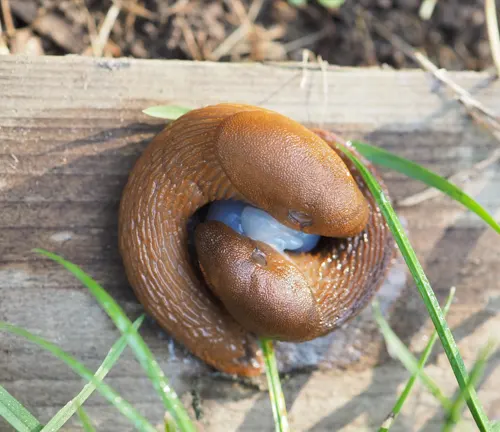
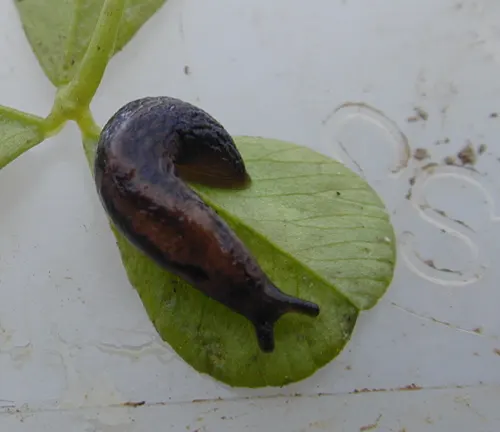
Development Stages
After mating, Gray Garden Slugs lay clusters of translucent eggs in moist soil or concealed locations. The eggs hatch into juvenile slugs, which undergo several growth stages, shedding their outer skin through a process called molting as they mature.
Feeding Habits
Diet Preference
Gray Garden Slugs are herbivores and feed primarily on plant matter. They consume a wide variety of vegetation, including leaves, stems, flowers, and fruits of garden plants and agricultural crops.
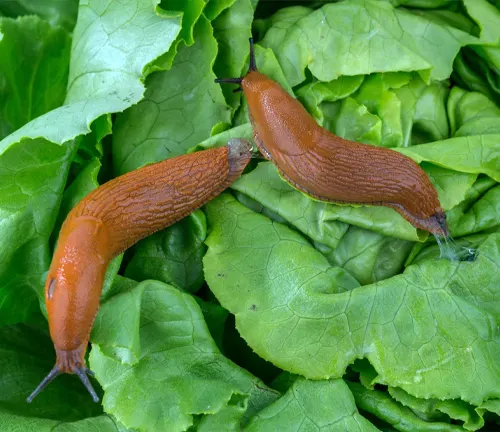
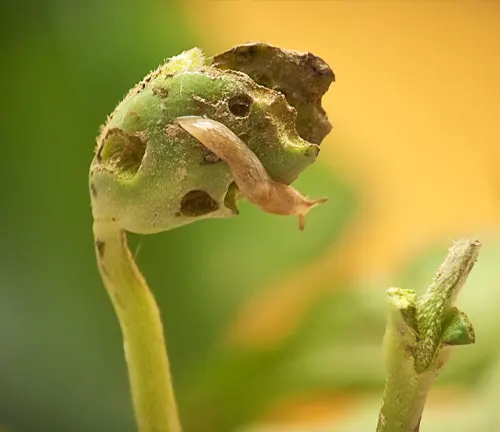
Impact on Plants
Their voracious appetite and ability to reproduce rapidly make Gray Garden Slugs significant pests in gardens and agricultural settings. Their feeding activity can cause extensive damage to crops, leading to reduced yields and economic losses for farmers.
Behavioral Patterns
Nocturnal Activities
Gray Garden Slugs are primarily nocturnal creatures, meaning they are most active during the night. They emerge from their hiding places under the cover of darkness to feed and engage in mating behavior.
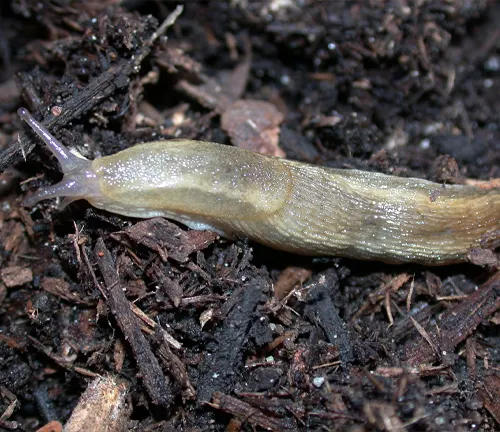
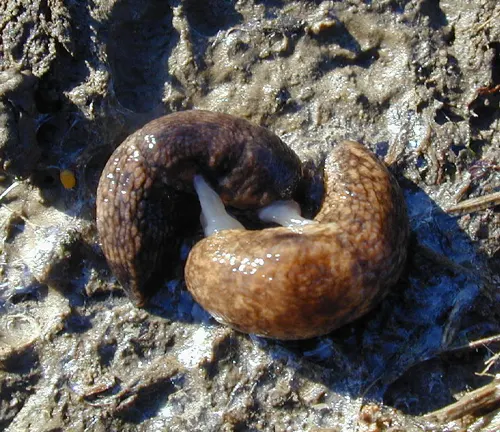
Mating Behavior
Mating behavior in Gray Garden Slugs involves complex courtship rituals, including the exchange of sperm between individuals. After mating, each slug lays eggs, contributing to the next generation’s population.
Adaptations
Defense Mechanisms
Gray Garden Slugs employ several defense mechanisms to protect themselves from predators, including retracting into their shells and secreting a thick layer of mucus to deter attackers.
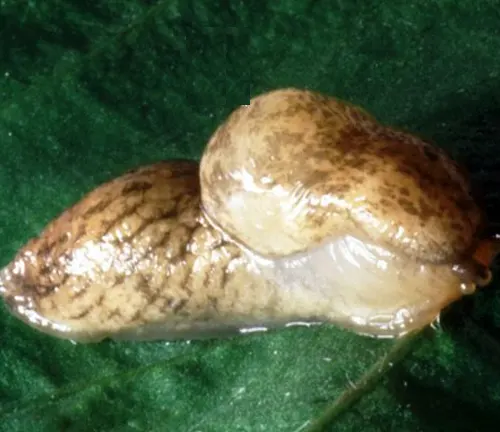
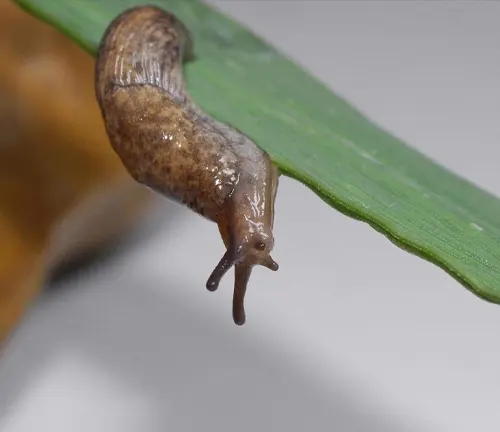
Survival Strategies
To survive in various environments, Gray Garden Slugs rely on their adaptability and ability to thrive in diverse habitats. They seek out moist, sheltered locations during the day to avoid desiccation and predation.
Predators
Natural Enemies
Several natural enemies prey on Gray Garden Slugs, including birds, toads, frogs, snakes, beetles, and certain species of ground-dwelling insects. These predators help regulate slug populations in their natural habitats.
Defense Mechanisms Against Predators
In addition to retracting into their shells and secreting mucus, Gray Garden Slugs may also employ behavioral adaptations such as camouflage and hiding to evade detection by predators.
Ecological Role
Contribution to Ecosystem
Gray Garden Slugs contribute to ecosystem dynamics in several ways, despite their reputation as garden pests. Some of their contributions include:
- Nutrient Cycling: These slugs play a role in nutrient cycling by consuming plant matter and breaking it down into organic compounds. As they feed on decaying plant material, they help decompose organic matter, releasing nutrients back into the soil that can be utilized by plants and other organisms.
- Food Source for Predators: Gray Garden Slugs serve as a food source for a variety of predators, including birds, toads, frogs, snakes, beetles, and certain species of ground-dwelling insects. By providing sustenance for these predators, gray garden slugs contribute to the overall biodiversity and food web dynamics of their ecosystems.
- Habitat Modification: Through their burrowing and feeding activities, gray garden slugs can modify their habitats, creating microhabitats that may benefit other organisms. For example, their burrows can aerate the soil and create moisture-rich environments that are conducive to the growth of certain plant species and soil microorganisms.
- Interactions with Plants: While primarily herbivores and capable of causing damage to plants, gray garden slugs’ interactions with vegetation can also have indirect benefits. Their feeding activity may stimulate plants to produce chemical defenses or trigger growth responses that enhance their resilience to environmental stressors.
- Population Regulation: Predators help regulate gray garden slug populations in natural ecosystems by preying on them and keeping their numbers in check. This natural balance prevents slug populations from reaching excessively high densities, which could negatively impact plant communities and ecosystem health.
Potential Threats
Agricultural Damage
Gray Garden Slugs are notorious for causing damage to agricultural crops, including vegetables, fruits, and ornamental plants. Their feeding activity can result in crop loss, decreased quality, and economic losses for farmers.
Pest Control Measures
Farmers and gardeners employ various pest control measures to manage Gray Garden Slug populations, including cultural practices, biological control agents, and chemical interventions. These methods aim to minimize damage to crops while minimizing environmental impact.
Human Interaction
Encounters in Gardens
Gray Garden Slugs are commonly encountered in gardens, where they can wreak havoc on ornamental plants and vegetable crops. Gardeners often employ preventive measures and control strategies to protect their plants from slug damage.
Control Methods
Effective control methods for managing Gray Garden Slug populations include cultural practices such as removing debris and creating barriers, biological control agents like predatory insects and nematodes, and chemical interventions using molluscicides. These methods aim to reduce slug damage while minimizing harm to beneficial organisms and the environment.
Different Species
Milky Slug
(Deroceras laeve)
Also known as the “smooth-skinned slug,” the milky slug closely resembles the gray garden slug in appearance, with a grayish-brown coloration and slimy texture. It is commonly found in gardens and agricultural areas across North America and Europe.
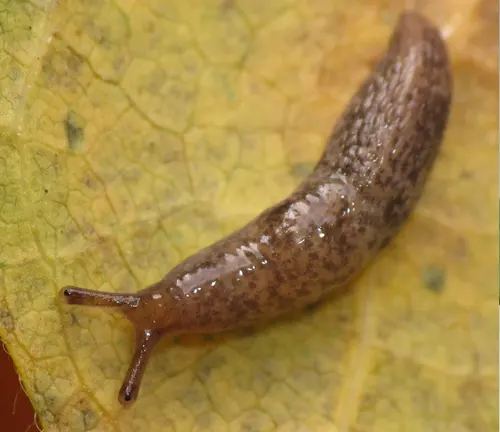
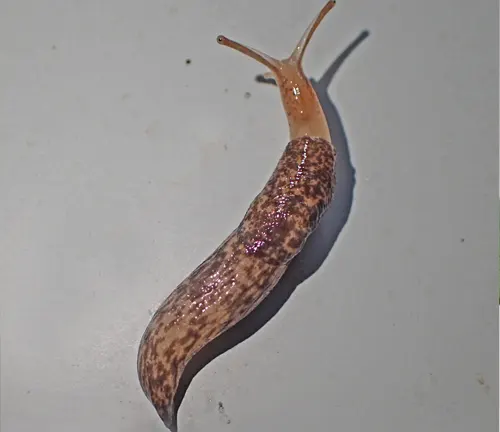
Field Slug
(Deroceras agreste)
Another species within the Deroceras genus, the field slug is similar in appearance to the gray garden slug but tends to have a lighter coloration and smaller size. It is widespread in agricultural fields and grassy habitats.
Netted Slug
(Deroceras panormitanum)
This species, also known as the “netted field slug,” shares many characteristics with the gray garden slug, including size, coloration, and habitat preferences. However, it can be distinguished by the net-like pattern on its mantle, giving it a slightly different appearance.

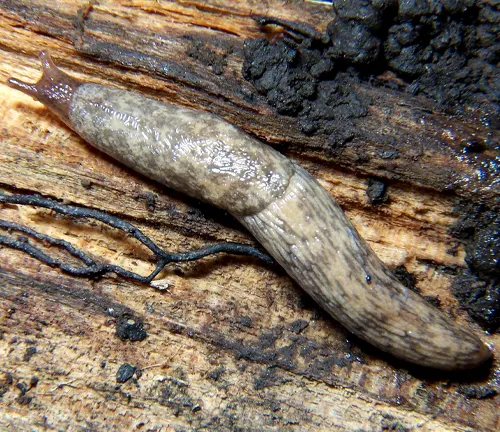
Grey Field Slug
(Deroceras praecox)
The grey field slug closely resembles the gray garden slug in size and coloration, making it easy to mistake for the common garden pest. It is commonly found in agricultural fields and grasslands across Europe.
Large Black Slug
(Arion ater)
While not gray in color, the large black slug is often encountered in garden settings alongside gray garden slugs. It is larger in size and has a dark, almost black coloration, but shares similar feeding habits and habitat preferences.
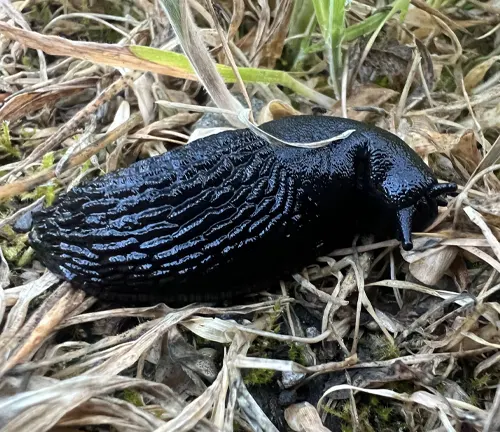
Frequently Asked Questions (FAQs)
- What is a Gray Garden Slug?
This question seeks a basic definition of the Gray Garden Slug, including its scientific name, physical characteristics, and habitat. - Are Gray Garden Slugs harmful to plants?
Gardeners often inquire about the potential damage caused by gray garden slugs to plants, seeking information on preventive measures and control strategies. - How do I identify Gray Garden Slugs in my garden?
This question aims to help individuals distinguish gray garden slugs from other slug species or pests commonly found in garden environments. - What are the natural predators of Gray Garden Slugs?
People curious about the ecological balance of slug populations may ask about the creatures that prey on gray garden slugs and help regulate their numbers. - How can I control Gray Garden Slug populations in my garden?
This FAQ addresses strategies and methods for managing gray garden slug infestations, including both preventive measures and control options. - Are Gray Garden Slugs harmful to humans or pets?
Concerns about potential harm or toxicity associated with gray garden slugs may prompt this question, seeking reassurance or information on safety precautions. - Do Gray Garden Slugs serve any beneficial purpose in ecosystems?
Individuals interested in understanding the broader ecological roles of gray garden slugs may inquire about their contributions to nutrient cycling or other ecosystem processes. - Can I use natural or organic methods to control Gray Garden Slugs?
This question explores alternatives to chemical control methods, such as biological control agents or cultural practices, preferred by those practicing organic gardening or environmentally friendly pest management. - What are some myths or misconceptions about Gray Garden Slugs?
People may seek clarification on common misconceptions or myths surrounding gray garden slugs, such as the effectiveness of salt as a control method or their role in transmitting plant diseases. - Are Gray Garden Slugs invasive species?
Individuals concerned about the potential ecological impact of gray garden slugs may inquire about their status as invasive species and any associated management efforts or regulations.


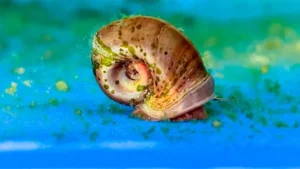
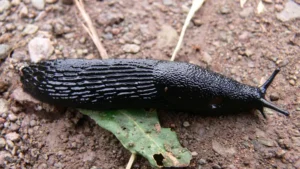
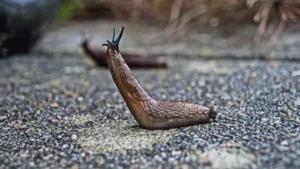
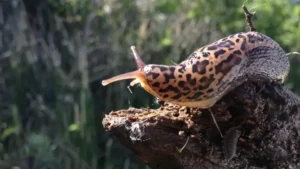

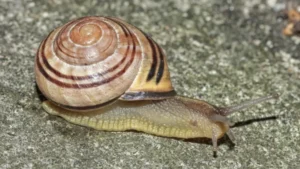

Leave your comment